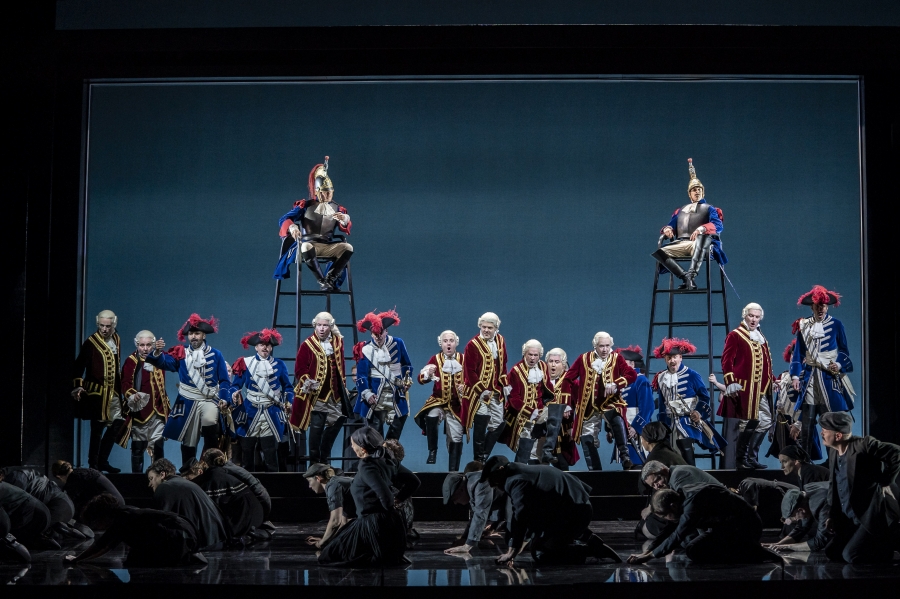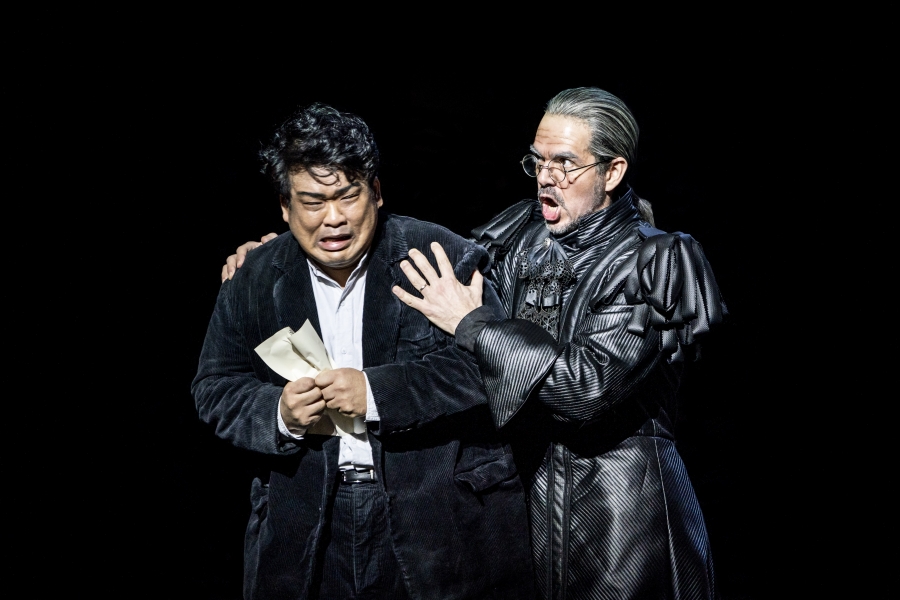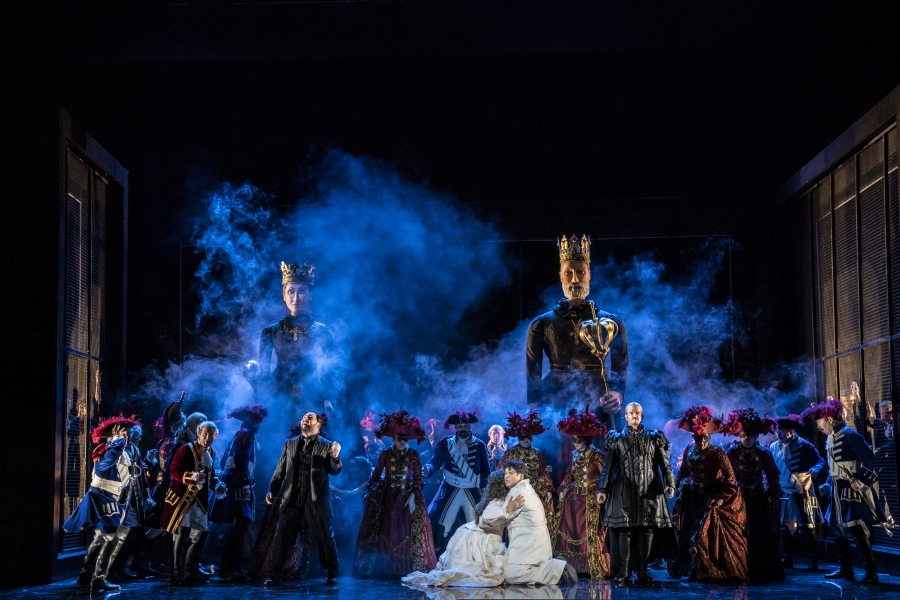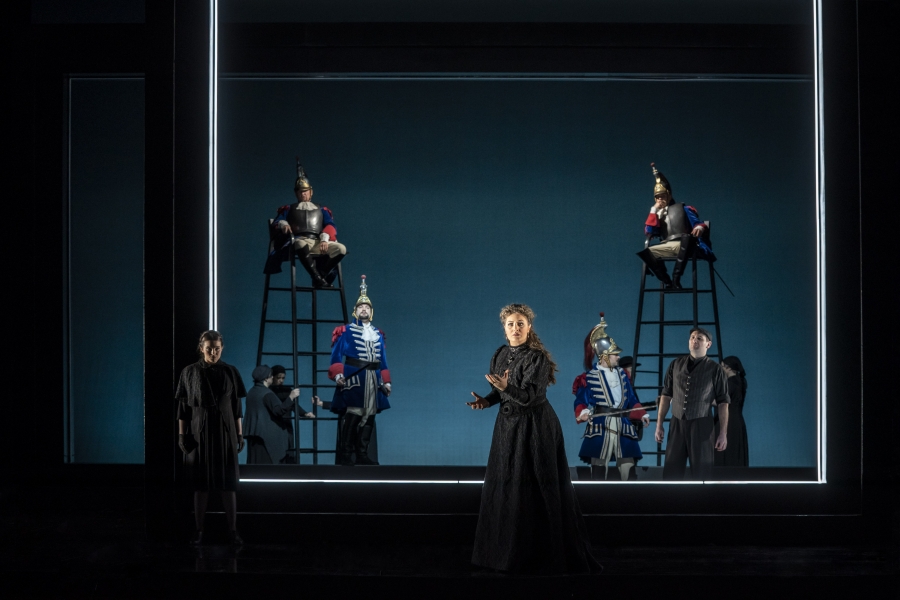First performed in 1855 at the Paris Opéra, Les Vêpres Siciliennes is a less frequently revisited entry in the Verdi catalogue, and it is perhaps not difficult to see why; its grim tale of the needs of revolution intruding in and finally destroying its protagonists’ lives, its length, its more choral nature compared to other works of the Italian composer, may well have somewhat lessened its appeal to performances and audiences alike in the past.
This is a pity, because Vêpres rightfully deserves a place among Verdi’s masterworks. Animated by the composer’s own passion for the revolutionary movements striving in his time to bring Italy together as a country, Verdi revisits a historical narration from 1282, taking the broad lines of the events from a chronicle of the time and filling them with the disquiet of his own contemporaries. This is also some of his finer, more interesting musical work; the music is more complex, layered, and articulate than in many of his better known opera, with a darker quality to it that is well suited to the subject. It might contain none of the most famous aria of the Verdi repertoire, but it does contain a number of articulate, challenging sections, representing a worthy challenge for a good performance.
Jung Soo Yun and Giorgio Caoduro
Anush Hovhannisyan
It is a work where mood is everything, and this new WNO production seems to understand this fact well, evoking on the stage visuals that are dark, ominous, almost oppressive, as if suggesting from the very beginning what the inevitable ending of the story will be. The use of frames and neon lights in the stage setting is clever, though not always as effective as it aims to be, especially considering that darker tones, with an abundance of black, are chosen for the costumes of many characters; while there are some stunning moments where the figures stand frozen like shadows, silhouetted against a dimly lit background, some other scenes come across somewhat too dark, the white neon too stark by contrast. When splashes of colours come out, it is easy to focus all the attention on them, whether it is the uniforms of the French occupiers, the traditional costumes of the oppressed Sicilians, or the sickly green backdrop to the excellent ballet in the first half, telling through movement the backstory that led protagonist Henri to be separated from, and unaware of the identity of, his father, the ambiguous and all-too-powerful Guy de Montfort.
Speaking of traditional costumes, it was a particular pleasure for me as a Sicilian to see an almost philological investigation of dress and culture be a part of the design of this opera. From the clothes worn by the Sicilian characters, which are accurate to a number of Sicilian outfits both traditional and contemporary, to the red-and-yellow flag making a poignant appearance in the first half, to the masks used in the ball scene, which evoke with punctual precision the old tradition of the Opera dei Pupi with its marionette, anyone who is acquainted with Sicily and its varied history will find, like a number of Easter eggs, numerous accurate details to be delighted with, adding a pleasant depth to the representation.
The three hours and a half of Vêprescan be cumbersome in places; here, while it may feel a little slow at the start, it rapidly escalates to a good pace and sustains it to the end, mostly thanks to the performances of its cast. Baritones Giorgio Caoduro and Wojtek Gierlach (Guy de Montfort and Jean de Procida respectively) get perhaps less of an opportunity to showcase their abilities than in previous WNO production, but stand out no less, not only for their smooth vocal performance but for their acting presence; Gierlach is imposing in the convulsive final scenes as the vengeful Procida, and Caoduro channels the internal contradiction of the calculating but passionate Montfort, with an excellent delivery of the Au sein de la puissance aria. The two protagonists are also faced with challenging roles; Jung Soo Yun gives a smooth and almost soft-spoken performance as Henri, rightly avoiding the temptation to invest this tormented youth with too powerful a delivery, while Anush Hovhannisyan channels the turmoil of her Hélène’s feelings, starting with an austere, almost stiff delivery in the first act, to gradually move towards a mellower one (the prison duet is a stand-out moment both for her and for Yun), and finally a passionate, almost frantic crescendo in the final scene. Her performance is in a way the fil rouge linking the opera together, and her progression is the progression of the story.
Les Vêpres Siciliennes is not an easy opera to represent; it is good to see it on stage, where it doesn’t appear as often as it should, and this WNO production is both respectful of the opera and its contents, and clever in the ways it conveys them. While not as innovative or experimental as other WNO takes on famous operas in the past, it rests on solid performances and has a dark charm of its own. More than a rethinking of Verdi’s work, it is an in-depth investigation of its light and shadow, conducted with sincere passion for the work itself.
For full tour details. wno.org.uk
Mike Smith review:https://asiw.co.uk/reviews/les-vepres-siciliennes-welsh-national-opera-wales-millennium-centre
WNO’s next season: WNO 2020-21 season including 75th year



